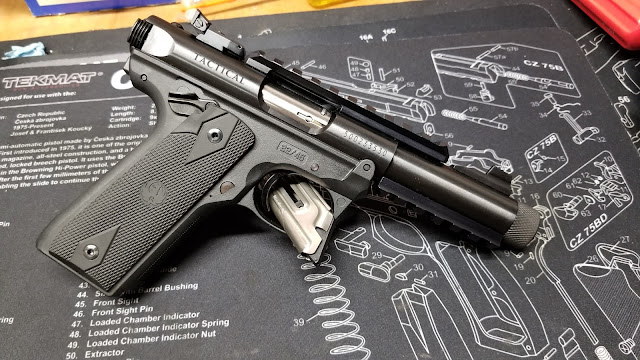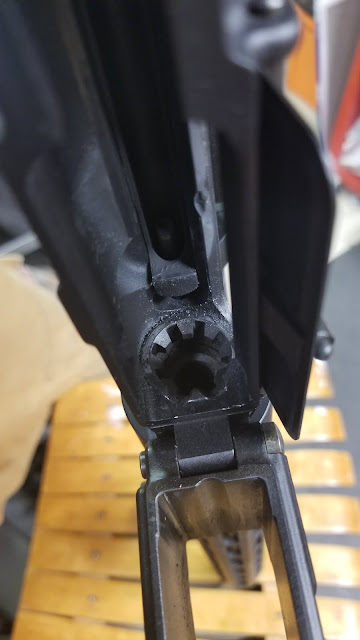The Ruger Mark Series
Introduction:
As far as .22LR pistols go, the Ruger Mark series has stood the test of time. The story of the Mark series is intimately intertwined with the story of Ruger itself. The "Ruger Standard Model" was actually the first product released by Sturm & Ruger in 1949. The design actually borrowed design cues from Japan's Nambu pistol from WWII. The rear cocking piece and internal bolt in leu of a traditional slide allows for a very accurate little pistol. The sights and barrel don't move during each shot, so the Ruger Mark series is a very popular target pistol. The different Mark numbers represent design iterations that the pistol has gone through over the decades of production. The MKII was the first model to introduce a wide variety of models, including three different barrel lengths and styles, blued and stainless finishes, and a 22/45 model that had a polymer frame mimicking the grip angle of a M1911. The MKIII was largely the same, except with the addition of a loaded chamber indicator, a different magazine release, and various safety additions. Lastly is the most recent model, the MKIV. The MKIV's primary benefit over the other models is the ease with which the pistol is field stripped for cleaning. There were also some revisions to the controls of the pistol and the trigger group. I'm going to focus mostly on the MKIV since that is what I have access to, but the overall action of the pistol has stayed the same since 1949.
Details:
At its core, the Ruger MKIV is an internal hammer fired, simple blowback .22LR pistol. The recoil spring and the fairly heavy bolt provide sufficient force to contain force exerted by the relatively weak round. The specific model that have is the MKIV 22/45 Tactical. This means that in addition to the frame being designed to mimic a 1911, the pistol also has an optics rail, a rail for lights/lasers, and a threaded, 4.4in barrel for a suppressor.
The ease of disassembly is where the MKIV really shines. With the hammer cocked and the safety engaged, all that needs to happen is for the user to depress a button at the rear of the receiver, than hinge the upper receiver off of the frame. After that, the bolt can simply be slid out the rear of the upper receiver.
This is a huge break from the other three variants of the Ruger Mark series. The previous models' disassembly procedure required a paper clip and a rubber mallet. Don't believe me? Here's a video:
Although this represents a significant design difference between the MKIV and previous models, the overall function remains largely the same. The internal bolt design is pretty cool, especially when the vast majority of pistols on the market today are a typical slide-over-frame design. The bolt itself retains the recoil spring, so the entire mechanism comes out as a singular unit. This is extremely convenient for disassembly in that the user doesn't have to worry about a spring flying across the room is a mistake is made.
The rest of the bolt is fairly unremarkable. because there is no locking system on the Mark series, the bolt face is just flat, except for the extractor and firing pin.
Conclusion:
I got the MKIV Tactical primarily as a suppressor host. The MKIV makes a great suppressor host because of its barrel length, at only 4.4 inches, .22LR rounds consistently stay subsonic. This ensures that all shots with a suppressor are as quiet as possible.
I know it's not the most practical pistol to own, but not every gun that you own needs to be practical. The MKIV is a fun target pistol, and I intend to use it for just that purpose. It isn't replacing my P01 as my carry gun, but I intend to have plenty of fun plinking with it.





Comments
Post a Comment